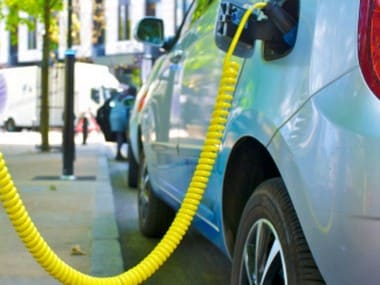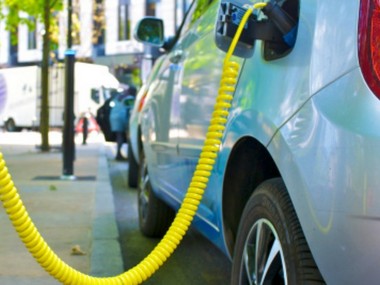As India stands at the crossroads of a clean mobility revolution, the proverbial sounds around the ecosystem are all too familiar. From supporting infrastructure to product reliability and affordability, the realisation of an impending transition buoyed by a Convenient Action is a foregone conclusion. The transition or in this case transformation offers an opportunity to not just have cleaner or zero emission vehicles on the roads but also robust manufacturing and mobility-as-a-service (Maas) that can draw parallels from ongoing overall clean energy transition. The evolution of the Indian auto industry with its hyphenated products (Maruti-Suzuki, Hero-Honda) supported by enabling government policy on infrastructure and incentives enabled the development of world class auto industry and Indian entrepreneurs. It had a transition roadmap, be it safety seat belts and airbags, or emission norms that allowed for and encouraged Reserach and Development (R&D) and more. It would only be fair to say that India would be one of the few countries in the world and perhaps the only developing nation where the industry would be ready with BS VI or Euro 6 norms. India’s solar revolution, on the other hand, with a 500 MW procurement a decade back in Gujarat was a Convenient Action sans parallel. It recognized the potential of solar in India’s energy security and irrevocably set in motion the solar-led clean energy transition. The Gujarat procurement and National Solar Mission (NSM) subsequently focused on and achieved in lowering the cost per kWh (solar panel output calculator) of solar through scale and establishing the renewable Independent Power Producers (IPP’s) as a competitive and world-class service providers who are now outbound from India. [caption id=“attachment_4279247” align=“alignleft” width=“380”]  Representational image. Reuters.[/caption] Similarly, the clean mobility transition is a given in the context of urbanisation, emissions and noise reduction. For example, an electric bus operating as a city service in a metro would save 25 tons of carbon dioxide (CO2), lower noise by 17~20 decibel with zero particulate emissions per year and provide a better ride comfort at per km rates similar to a CNG bus. However, a host of technologies on clean mobility from hydrogen to fuel cell are around the corner and even in electricity, the jury is still out on the battery chemistry. Further, the compressed natural gas (CNG) conversion. more so in the urban context, throws up interesting insights on a mobility transition. Driven by regulation, rather judiciary, the public transport transition to CNG is at best limited to 4-5 urban pockets, that too piecemeal barring Delhi. Nearly two decades later, the supporting infrastructure (read CNG stations) are woefully short and one only has to see Delhi late at night to witness the long queues of vehicles at CNG stations. Logically, its a cleaner fuel, affordable and win-win situation for consumers and CNG retailers; yet transition lags even in closed loop high density urban pockets. India’s clean mobility transition under FAME II takes cognisance of these learnings and lays out a vision to develop the next generation of public transport utilities. For starters, it clearly frames out that incentives and support will be directed to public transport vehicles and on an OPEX (operational expenditure or gross cost) model aggregating 7,000 electric buses alone over the next three years. These would be 10-year service contracts entailing about $2 billion in capex and will result in the growth of home-grown public transport utilities providing competitive, affordable and sustainable public transport. Supplemented by state specific procurement plans, the opportunity provided by the introduction of the electric bus over the next five years alone would be $10 billion. Global transport utilities and leading private equity firms have already taken cognisance of the same. In addition, the policy recognises and provides for the setting up of independent public charging infrastructure. With the electricity grid already in place and supply of electricity not a challenge, the charging infra can be set up quickly with as required grid infrastructure capacity upgradation. The first large-scale public implementation for electric buses in India at Shimla is a working testimony that electric buses are here to stay. However, what is of concern is that procuring utilities under an OPEX model restricts the use of charging infrastructure to only buses procured by the fleet owner operator under the contract. It would be a pity and waste of national resources if charging infrastructure set up under such OPEX models is not made public to further the confidence among EV users. It’s interesting to note that FAME II recognises the importance of batteries and links incentives to battery capacity but stops just there. With the proposed plans of setting up gigawatt scale battery plants and lowering battery costs in India, one just cannot help draw parallels between NSM and SIPS or incentive packages and now FAME II and Gigawatt storage plants. Just as NSM was to provide scale and lower costs per kWh and SIPS was envisaged to support solar manufacturing, FAME II is designed to accelerate electric transition and the gigawatt factories to spur local manufacturing and lower costs. While NSM largely succeeded in meeting the policy objectives, the outcome of SIPS is debatable. As FAME II pushes the EV penetration, it would be worthwhile for the policy to relentlessly focus on a phased manufacturing program and bankable benchmarks in terms of financial and technical capability for original equipment manufacturers (OEM) to ensure quality of supply chain in the EV product space. If India’s home-grown auto industry can come with BS VI solutions, then indigenous EVs are a near-term reality provided the domestic organised industry is asked to compete on a level playing field with newer entrants. The proliferation of e-rickshaws, the much visible reality of the impending EV explosion is not really inspirational in terms of a domestic manufacturing ecosystem and the early signals from other EV segments have not come with large headline investments in manufacturing either. Electric mobility is the immediate answer to clean mobility and the onus is on us to ensure that a sustainability transition this time round comes with a world-class domestic industry. (The writer is Founder AEM Energi & Motum, an electric mobility company.)
The indigenous EVs are a near-term reality provided the domestic organised industry is asked to compete on a level playing field with newer entrants
Advertisement
End of Article


)

)
)
)
)
)
)
)
)



